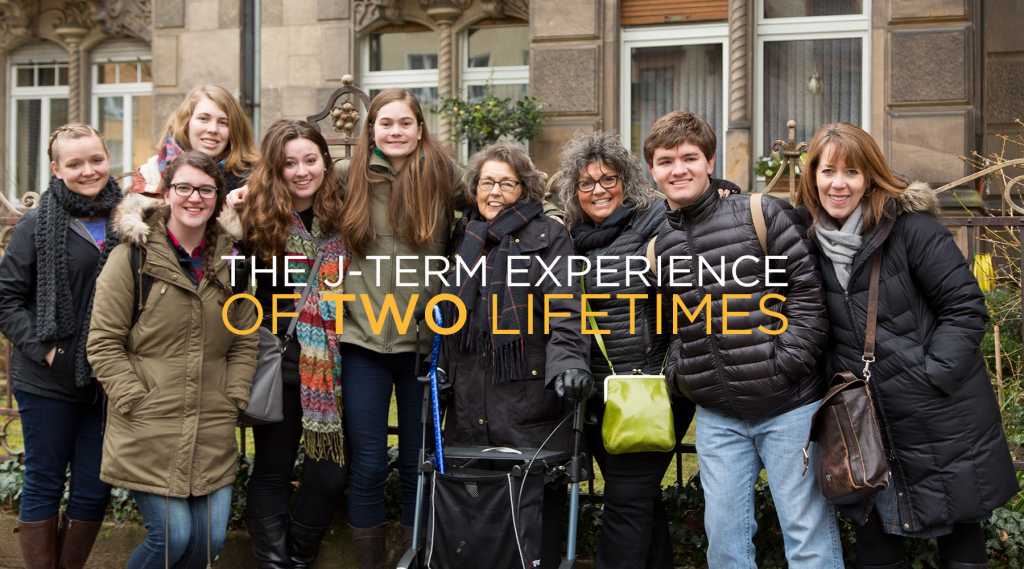Page 78 • (886 results in 0.079 seconds)
-

family,” Christensen said. And so on Jan. 2, Christensen and six PLU students—April Burns ’16, Natalie DeFord ’15, Lexi Jason ’18, Sophia Mahr ’18, Savannah Schneider ’15 and Frances Steelquist ’16—left for Germany. They were met later in the month in Mainz, where Kurt Mayer lived as a child with his parents, by three generations of Mayer’s family: his wife, Pam; his daughter, Natalie; and her son, Elliott. Together they spent a weekend visiting key places from Mayer’s childhood and, at each stop
-
appropriate qualified members to serve on the committee. General Purpose: To ensure the appropriate care and use of all nonhuman animals used for teaching, research, research training, or biological testing activities. “Animal” is defined as any live, vertebrate animal used or intended for use in research, research training, experimentation, or biological testing or for related purposes. Specific Duties: Review at least once every six (6) months the institution’s program for the humane care and use of
-

of air – the van had been sealed to maintain a constant humidity level – but Louvre’s famous resident was just fine. Eventually, the painting returned to the Paris museum – after being relocated six more times – with most of the rest of the Louvre collection. Most of the other artwork in Europe was not as fortunate, noted Assistant Professor of Art and Design Heather Mathews. Professor Heather Mathews talks about the plunder of art during WWll by the Nazis during the 2012 Holocaust Conference
-
, Bulgaria and Hungary in 2007, as well as the tour to Germany and France in 2011. That tour featured performances at the Harmonie Festival in Lindenholzhausen, Germany, a world competition that takes place once every six years. Choirs from 47 countries participated in the 2011 festival. The Choir of the West won a Gold Certificate (second place) in the Large Mixed Choir division, and the men of the choir won a Gold Certificate (first place) in the Male Chamber Choir division. The women of the choir were
-

chance to explore new options and interests.Tip: Which graduate program is right for you? Explore our educational guides to learn more about the graduate programs at Pacific Lutheran University.Download Free Educational GuidesIf you’re ready to switch careers, Pacific Lutheran University’s graduate programs can set you up for success in a new field. When looking for the best degree, choosing a graduate program that will help you join a new field or industry is important.Here are six graduate degree
-
are all closely related.Step Six: Attend interview (by invitation)Once the applications are reviewed, candidates advancing to the next stage of review will be invited to an interview appointment. Interview for November 1 priority applications: November 27 – December 1 Interview for February 1 priority applications: February 26 – March 2 (Dates are subject to change) Interview Preparation The PLU School of Education has developed a set of guiding principles that serve as the foundation of our
-
class ranks, rehearses Tuesday and Thursday, 1:45-3:15 PM. Conducted by Prof. Barry Johnson. PREPARING FOR YOUR AUDITION The initial audition is six minutes, and we try to make it as user-friendly and stress free as possible. The choral faculty (Dr. Galante, Dr. Dominguez, and Prof. Johnson) will hear you sing a solo piece—something you may have worked on with a voice teacher or for solo and ensemble when you were in high school, or even a simple hymn or carol. A professional accompanist will be
-

for producing excellent nurses — resulting in 100 percent of nursing graduates gaining employment within six months of graduation.Funded by individual donors, foundations and community partners, the center doubles the space available to nursing students, preparing them for their careers in a wholly modern way. In addition to the suites, the bright, spacious facility contains a student lounge, a 96-seat classroom, and another 48-student room with four screens, a video conference camera, and a
-
, Comparison and Use in Oriented Lipid Bilayer Studies of Piscidin Shiela Jones, Senior Capstone Seminar The problem of RF heating in biological ssNMR samples is addressed here through comparisons of total average electric and magnetic field over a sample volume, defined as 12-mm by 6-mm by 4-mm. Six different Low-E coil capacitor designs at 630 MHz are simulated and compared with a typical four-turn, flat-wire solenoid to minimize the E/B ratio over the sample volume, thus reducing RF-induced heating
-
. Under terms of the grant, Dr. Duane Catlett served from 1968-70, replaced by Dr. Duane Swank in 1970. These six faculty continued throughout the 1970’s and 1980’s until Anderson and Tobiason elected early retirement in 1991. With Olsen’s retirement, Dr. Lawrence Layman came in 1974, leaving in 1978 and being replaced in 1979 by Dr. Sheri Tonn, currently department chair (ed.: at the time this history was written). Every tenured member has served as department chair at least once, Anderson as Dean of
Do you have any feedback for us? If so, feel free to use our Feedback Form.


